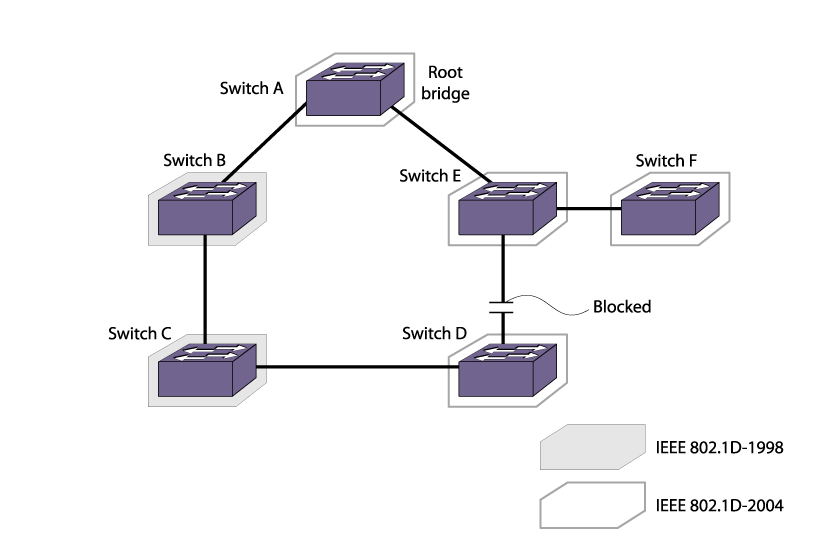The 802.1D-2004 standard modified the default port path cost value to allow for higher link speeds.
A higher link speed can create a situation whereby an 802.1D-1998 compliant bridge could become the more favorable transit path.
For example, in 802.1D-1998 and 802.1D-2004 Mixed Bridge Topology, bridge A is the root bridge running the new 802.1D-2004 standard, bridges B and C are running the old 802.1D-1998 standard, and bridges D, E, and F are running the new 802.1D-2004 standard. In addition, all ports are 100 Mbps links. The ports on bridges B and C have a default path cost of 19, and the ports on bridge A, D, E, and F have a default path cost of 200,000.

If you use the default port path costs, bridge D blocks its port to bridge E, and all traffic between bridges D and E must traverse all of bridges in the network. Bridge D blocks its port to bridge E because the path cost to the root bridge is less by going across bridges B and C (with a combined root cost of 38) compared with going across bridge E (with a root cost of 200,000). In fact, if there were 100 bridges between bridges B, C, and D running the old 802.1D-1998 standard with the default port path costs, bridge D would still use that path because the path cost is still higher going across bridge E.
As a workaround and to prevent this situation, configure the port path cost to make links with the same speed use the same path host value. In the example described above, configure the port path cost for the 802.1D-2004 compliant bridges (bridges A, D, E, and F) to 19.

Note
You cannot configure the port path cost on bridges B and C to 200,000 because the path cost range setting for 802.1D-1998 compliant bridges is 1 to 65,535.To configure the port path cost, use the following command:
configure stpd stpd_name ports cost [auto | cost] port_list

 Print
this page
Print
this page Email this topic
Email this topic Feedback
Feedback